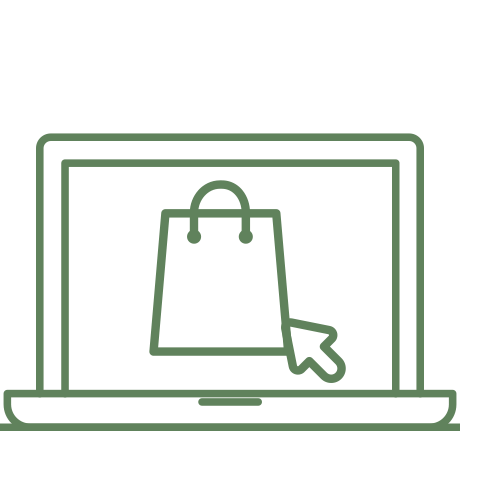Finishing the Details
Stage one was focused on building your house and getting the five most essential elements in order. Stage two was about getting those five channels to a level where they can start to pay dividends, and then adding on three additional channels. Now, in the third phase, you can take the foundation you’ve built and go even deeper into expanding upon the elements that will grow your business. Here, we’ll look at adding a final layer that will amplify and ignite the work you’ve already done. In addition to going even deeper into the channels you’ve already established, here you add CRM, marketing automation, and analytics and tracking into the mix.
Components of the Finishing Stage

Marketing Website
With a fully functioning website, your focus now should be on optimizing the various elements even further. You’ll want to track your conversion rate and make changes to optimize those numbers. This is also where you should think about segmenting your content. You might even build mini-websites on top of your larger website, with content that is targeted at specific groups and buyer personas.
Approach to Content
Now is the time that you'll want to think about harnessing your existing content for specific stages of the customer journey. How can you use content to ignite sales? How can you segment your content to meet your different ideal clients where they are at? How can you target your content towards specific groups and buyer personas?
Search Engine Optimization
Once you’ve created your on- and off-page SEO approach, you can continue to build on it. This is where you can add other forms of content, like a podcast, to increase your authority and ranking within search results. Appearing as a guest on existing podcasts allows you to build up even more links to your content. Continue to dive deeper into your Google Search Console data. Take what you learn there and use it to increase organic click-through rate on your website. This data can also help you to make changes that will allow you to appear in voice search and featured snippets, both of which are becoming increasingly relevant in the Google landscape.
Social Media
Now that you have a branded content presence across all relevant social platforms and have begun to boost posts and take a stab at paid advertising, now is the time to create broader campaigns. You might even look to create your own community online, with groups that encourage your fans and customers to come together. Live video is another critical element in social media, and a lot of business owners are tempted to start putting out video content immediately. In reality, it’s not worth adding live video into the mix until you’ve done the work in the foundation and framing phases and have the basic framework of your social media presence in place.

Email Marketing
In the earlier stages, you cleaned up your email marketing list and ran reengagement campaigns. This is the phase where you can begin to further segment your audience and run more and more complex campaigns.
Paid Lead Generation
The next step with paid search is to build an even more robust approach to your Google Ads. Establishing landing pages on your website that are tailored to specific campaigns is a great way to enhance the personalization of your messaging and impress prospects. You can also add display ads and re-marketing to your paid approach.

Sales Enablement
In the finishing stage, you’re able to get even more strategic about the way in which you present your offers to prospects. What gives you the greatest shot at making the sale? How can you best nurture leads that come in? If someone is already a customer, what do you do to get them to repeat? You can also consider adding speaking engagements into the mix, here. Like what you did earlier in establishing a partner network, speaking allows you to tap into others’ existing networks and grow your brand’s reach even further.
Customer Experience
A top-notch customer experience is about delighting them so much that they not only repeat but also refer your business. What can you do to stand out from the competition and win their repeat business? You should be using customer feedback to inform these marketing decisions. When you understand how your current customers feel about the service they receive from your business, you can create future campaigns, events, and products that directly address their needs and any gaps they’ve identified in your current approach.
Customer Relationship Management
You’ve already organized contact information in the build phase. A Customer Relationship Management (CRM) tool can help you further organize and track all relevant customer data. Once you’ve established a clear process for tracking and responding to customer behavior, you can go back in and take a look at the results. Which approaches are generating conversions, and which ones are falling flat? When you’re tracking responses within your CRM, you can continue to refine your marketing approach over time.
Marketing Automation
Most CRM tools today include a marketing automation component. This allows you to track behavior, score leads, and create and launch campaigns that are triggered by specific behaviors or actions. You can create campaigns that are triggered when someone opens an email, clicks a link, visits a website, or makes a specific purchase. This again speaks to the importance of personalization. When your business responds to customers’ actions with relevant follow-up, that is a key component in creating a great customer experience.
Analytics
Now that your site is up and running, you can begin to set goals within Google Analytics. Decide on the KPIs you want to monitor, track your results, and tie all advertising activity back to what happens in Analytics. Call tracking is another important element for any small business. Interactions through your online channels generate tons of data. You can see where you got a click on your website, who liked and shared your social media, or who opened your email newsletter. Beyond that, you want to understand who actually became a customer. Call tracking allows you to keep tabs on who actually called your business, what happened in the interaction, and whether or not they decided to make a purchase from you.
Promise
• Consistent lead flow
• Tracking and testimg for maximum ROI
• Reduced waste on advertising
• Automated lead nurturing
• Higher ideal client conversion
• Higher retention and referral rate
Challenges
• Lead cycles up and down
• Marketing return hard to understand
• Client acquisition still seems high
• Sales process still too manual
• Customer service inconsistent
Attributes
• Not tracking client relationships
• Not fully tracking marketing results
• Not actively upselling and cross-selling
• Not taking full advantage of online advertising
• Not seen as a leader in the industry
Ready to Start
at the Core?
Complete our Free Marketing Checkup
for a detailed proposal! We'll be glad to
help you grow your business!

